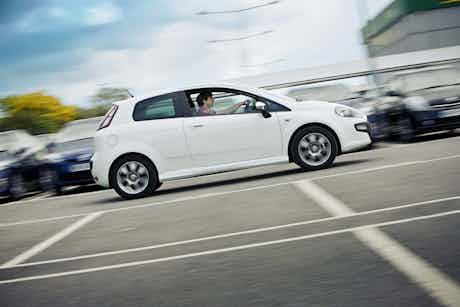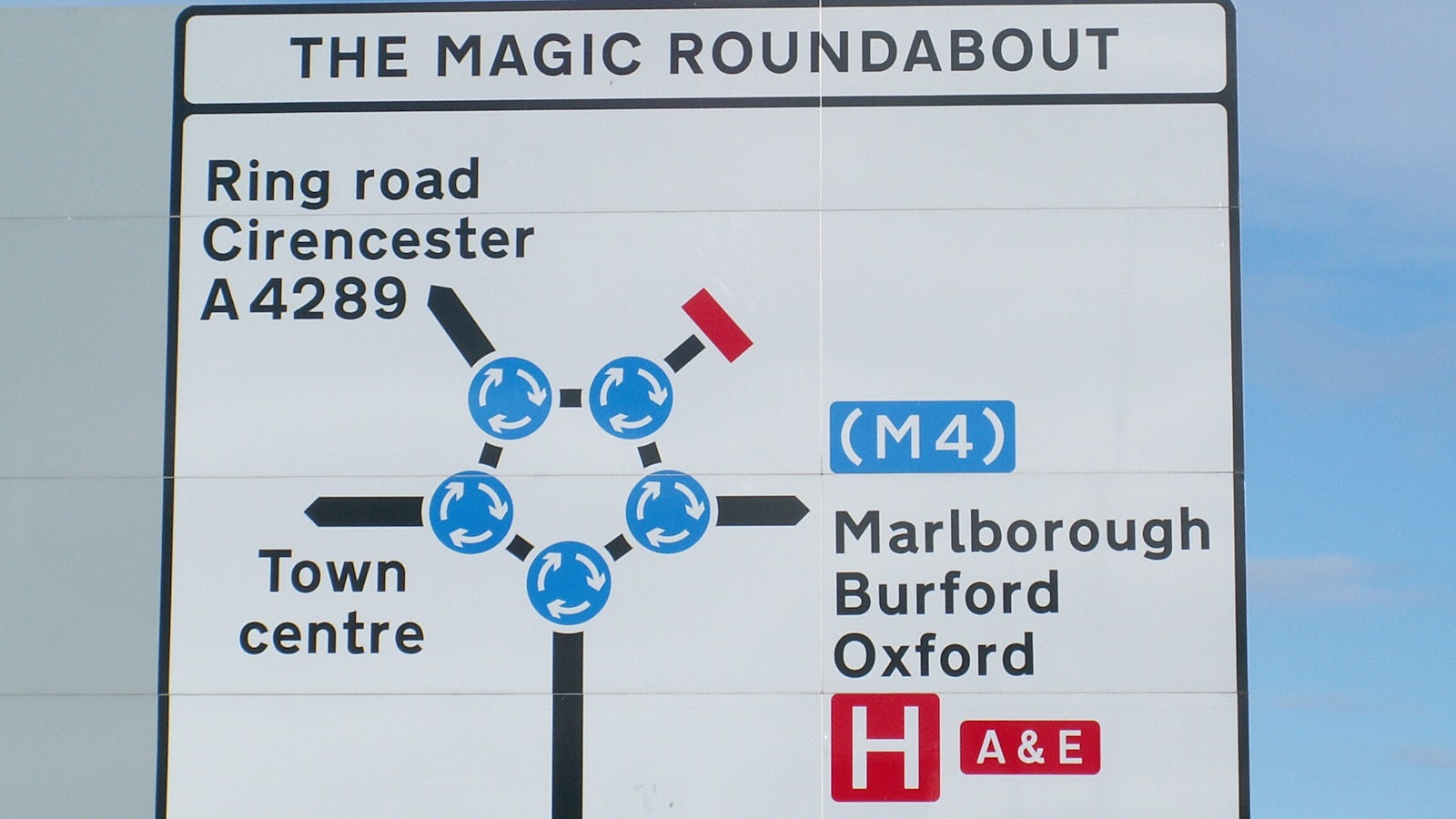How to test drive a car before you buy it
March 10, 2023 by carwow staff

Test-driving a car is an important part of the buying process, so whether you’re shopping for a new or pre-loved set of wheels, our handy test-drive guide will help you avoid the pitfalls
In the context of almost every other purchase, cars are hugely expensive items, while they also tend to be kept for many years.
Given this, it makes sense to test drive a car you’re interested in before signing on the dotted line. Because while excellent online resources like our in-depth car reviews and YouTube videos can give you a decent steer on what a model is like, there’s no substitute to seeing, touching and driving a car in real life.
Test driving a car involves more than just driving, too. Sure, how a car handles is really important, but you’ll also want to check out how comfortable the seats are, how spacious the back and boot are, if you think the interior materials measure up the quality you expect – the list is endless (which is partly why this guide is pretty lengthy).
It’s also worth bearing in mind that test driving a used car requires more rigour than trying a new one. New cars should, by their nature, be pretty much flawless in every respect, whereas a car that’s been around the block a few times could have picked up all manner of dings, dents and defects over time, which you’ll need to look out for in addition to deciding whether the car itself is right for you.
1. Play with everything. Everything.

If you buy it, you’re going to be driving this car for a long time, so you’ll need to familiarise yourself with all the controls you’ll use each day. It’s no use finding out a week after purchase that the cruise control is fiddly to operate, that the infotainment screen is laggy or there’s a vital button obstructed by the gearstick.
Tinker with all the seat and steering wheel settings too. You’ll need to find a good long-term driving position and, if you’re not the only person who’s going to drive it, bring the other driver along to check they can do likewise.
2. Drag the kids along too
You’re not only going to be stuffing yourself into the car day to day – your family needs to be in it too. So if you can resist the temptation to spring a new car on your offspring in an impressive surprise, take the kids along with you to check they’re comfortable in the back, both the ganglier teenage ones and any child-seat occupants. If nothing else it’s worth finding out if the front seats are within a toddler’s kicking range and making sure the interior is as Ribena-proof as is reasonable. There’s much to said for springing a brand-new car on
3. Don’t forget your golf clubs

There’s little using buying a car that doesn’t have the boot space to fit in with your lifestyle, whether that means golf clubs, push chairs, dogs or bikes. Outright load space figures don’t always tell the whole story – and how different manufacturers measure it may not be consistent – so if possible, take along something you’re likely to carry regularly to see how the boot measures up. Depending on what your hobbies are, if you don’t much fancy taking a surfboard, Maypole or hunting rifle with you to the dealership (we could hardly recommend you bring the latter), at least have their measurements to hand when you head to check out the car.
4. Drive it about the car park first – and last
Let’s face it, every journey begins and ends with parking, so you’ll need to get a handle on how the car feels at low speeds, particularly when it comes to visibility. It’s no good buying a car you can’t pootle around parking bays in without bouncing off the scenery – unless you’re buying a Citroen C4 Cactus, where you get bubble-wrap panels to help you out.
Many modern cars have large A-pillars (the posts that connect the roof to the body of the car in front of the driver and passenger seats) for crash safety that obstruct your view and small rear quarterlight windows that make for poor backwards visibility. It may affect your decision not only to buy the car or not, but whether to pick certain things off the options list like parking sensors, reversing cameras and self-park aids – or even tinted privacy glass.
5. Plan a good driving route

Most salespeople have their own routes around the showroom planned and they’re often a good mix of roads, but you may want to plan a route that more closely represents what you’ll be using the car for. It’s well worth getting a route that involves a good mix of road types. You’ll need to discover if the car you’re driving makes an annoying noise at 70mph, but also keep in mind the sort of driving you’d usually be doing.
Don’t just stick to the smoothest tarmac you can find either. Drive it over some of Britain’s more post-apocalyptic roads so you can find out just how comfortable it is when the going gets rough.
6. And don’t mollycoddle it
Give it some stick. It doesn’t matter what you’re looking to buy, you’ll at least need to know how it feels under hard braking so that when an emergency arises you’re not caught out. We’re not saying do a full ABS stop in the middle of a town centre with a queue of traffic behind you, but it’s worth getting a handle on how the car feels in a panic situation.
Hard acceleration and vigorous cornering are perhaps less vital, but we all like a bit of fun every now and then. Now’s the time to find out if it sounds like a bout of flatulence under hard acceleration or flails about in the bends – before you hurl thousands of pounds at it. If you’re buying a sports or performance car, some manufacturers will offer experience days in the confines of a race track, so get on one of those.
7. Ask for a weekend test-drive
It’s all well and good poking and prodding and driving in an hour-long spell with a salesman hovering nearby, but to really get used to how a car feels you ideally need to borrow one for a short spell.
Many dealers will be reasonably happy to lend you a vehicle for a weekend or occasionally a week at a time, and it’ll give you a chance to experience ownership before taking the plunge.
8. Don’t try just one
Even if you liked the car, don’t settle for just one test drive. Try out another one – the first car might have been unusually good or bad. This is particularly important on used cars, as “Oh, they all do that” is one of the commonest phrases you’ll hear buying secondhand.
You might also notice that different versions of the same car (such an an entry-level version or a top-of-the-range trim) soak up bumps differently – you might find an entry-level car more comfortable on smaller wheels, for example. This’d save you money and trips to the osteopath.
9. Have a crack with different engines too
Whether you’re after a particular engine or not, it’s worth trying out some alternatives. You might have your heart set on a petrol model but find that a diesel version is just as good, or a slightly larger engine might turn out to be worth the extra money.

Don’t be fooled into thinking that smaller engines necessarily use less fuel either. In real world driving a less-stressed engine that you have to rev less may use less fuel than a smaller engine that you have to thrash everywhere.
10. Try out the rivals at the same time
Plan a day of test drives. If you’re heading to the Ford dealership to try the Focus out, set appointments at Volkswagen for the Golf, Peugeot for the 308, Mazda for the 3, Nissan for the Pulsar and so on. Testing these things out back-to-back is a great way to keep your impressions of them fresh in your mind and allow for a more objective comparison. If you’ve dragged the kids along as per point two, most industrial sites with car dealerships growing on them have also sprouted a fast food burger restaurant too. Don’t expect it to be the healthiest of days…
11. Switching to electric? Know what to look for
If you’ve been used to driving a petrol or diesel car for some time and are thinking of pivoting to an EV, you probably already know that while the fundamentals are the same, there’s a fair difference in how battery powered cars drive. So bone up on what regenerative braking is, and find out if this can be adjusted in the car you’re testing, plus if you like how this feature is adjusted. You’ll also want to know how fast a charge an EV can take, how big its battery is and how far it is likely to do on charge. This is such a big topic that our dedicated guide to driving an EV should be next on your reading list if you’d like some more pointers.
12. Buying used? Indulge your inner sceptic
As with EVs, this is a big topic we have a standalone guide for, but know what you should be looking for when inspecting a pre-loved car. It’s fairly obvious that it would be a bad idea to buy a car that doesn’t start or makes a horrible grinding noise every time you select a gear, but more subtle telltales – like whether the tyres are from a decent brand and in good condition – can give you an indication of how a car has been cared for.
You should also buy the vendor as much as the car: regardless of whether it’s a private or trade sale, you should get a good feeling from the person selling you the car, and if something feels at all off it’s usually best to trust your gut instinct.
13. And don’t kick the tyres
If you have no idea what you’re doing, take along a friend who does rather than pretending you do know what you’re doing. It’s just about impossible to gain any useful information from physically booting a tyre – but by doing so you tell the salesman that you’re inexperienced and probably an easy sell.
Change cars online with carwow
Looking for an easy way to change your car? Then carwow is the place to go. You can sell your car online for a great price, and get the best deals on a new one. All through our network of trusted dealers and all from the comfort of your home. Tap the button below to get started today.















